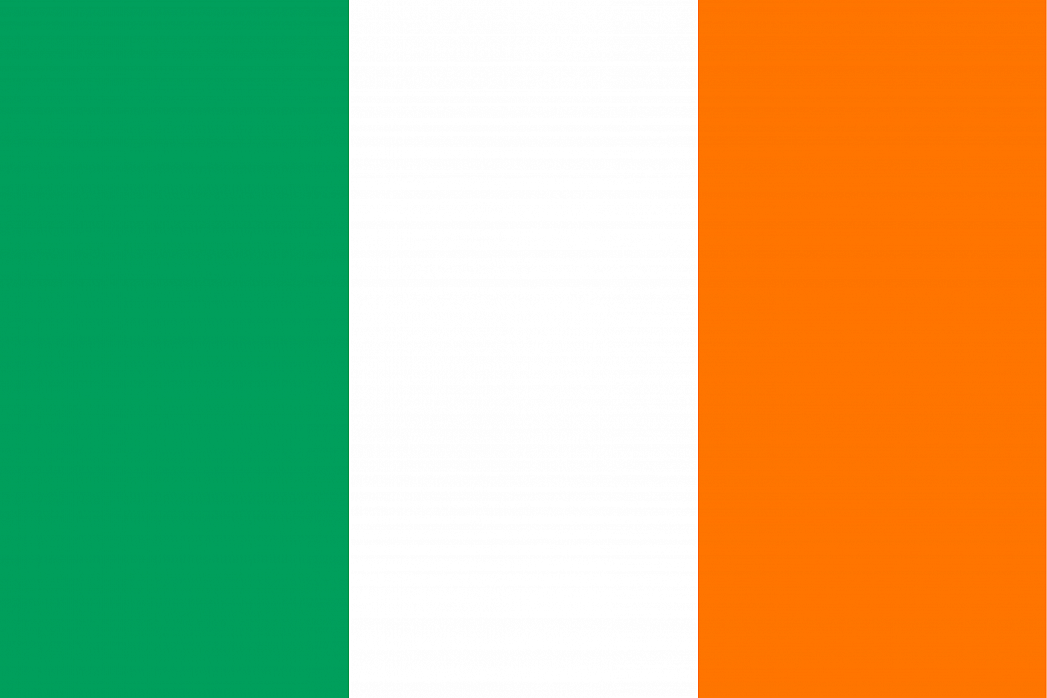The flag of Ireland consists of three equal-sized rectangles of green, white and orange colors. The colors are vertically aligned with the white color in between green (by the flagpole) and orange. The flag's proportion is 1:2 which is to mean that it's width is twice its length. The flag is often referred to as the Irish Tricolor. It was adopted during the Irish War of Independence between 1919 and 1921, however, was first flown publicly in 1848 at Waterford City. The 1916 Easter Rising, however, is what made the Irish Tricolor famous when it was raised above the General Post Office in Dublin.
The green color represents the Gaelic tradition thus stands for the Roman Catholic people whereas the orange color represents the Protestants who followed William of Orange. The white signifies the aspiration for peace between the Nationalist, mainly the Roman Catholics and unionist, mainly the Protestants.
In 1848, Richard O'Gorman, Thomas Francis Meagher, and Smith O'Brien visited Paris to congratulate the French on overthrowing King Louis Phillippe. A small group of French women, out of sympathy, wove an Irish tricolor made from the fine French silk and presented it as a gift to Thomas Francis Meagher with the hope that it would symbolize inclusion and union between the Roman Catholics and Protestants.
Before the Irish Tricolor was adopted, a green flag featuring a golden harp attributed to the province of Leinster was used in the mid-seventeenth century as the Irish flag by the Roman Catholic rule. In the last years of the 18th Century, green had been associated with the color of revolution. This flag was first used by Oweb Roe O'Neil in 1642 and was used until 1916. In 1850 a new flag was proposed with the orange color representing the Protestants of the Established church, green for the Roman Catholic and blue for the Presbyterians amongst other propositions. However, the Irish Tricolor was eventually adopted as the flag.
This page was last modified on May 1st, 2018
More on Graphicmaps

Published on 2019-11-06
What is a Trade Embargo?

Published on 2019-11-04
Which Two Countries Used to Have the Same Flag?

Published on 2019-09-16
What Is the Only Two-Sided State Flag?

Published on 2019-09-16
Which Country Flag Looks Like the Texas Flag?

Published on 2019-08-29
Flags That Resemble the US Flag

Published on 2019-08-20
